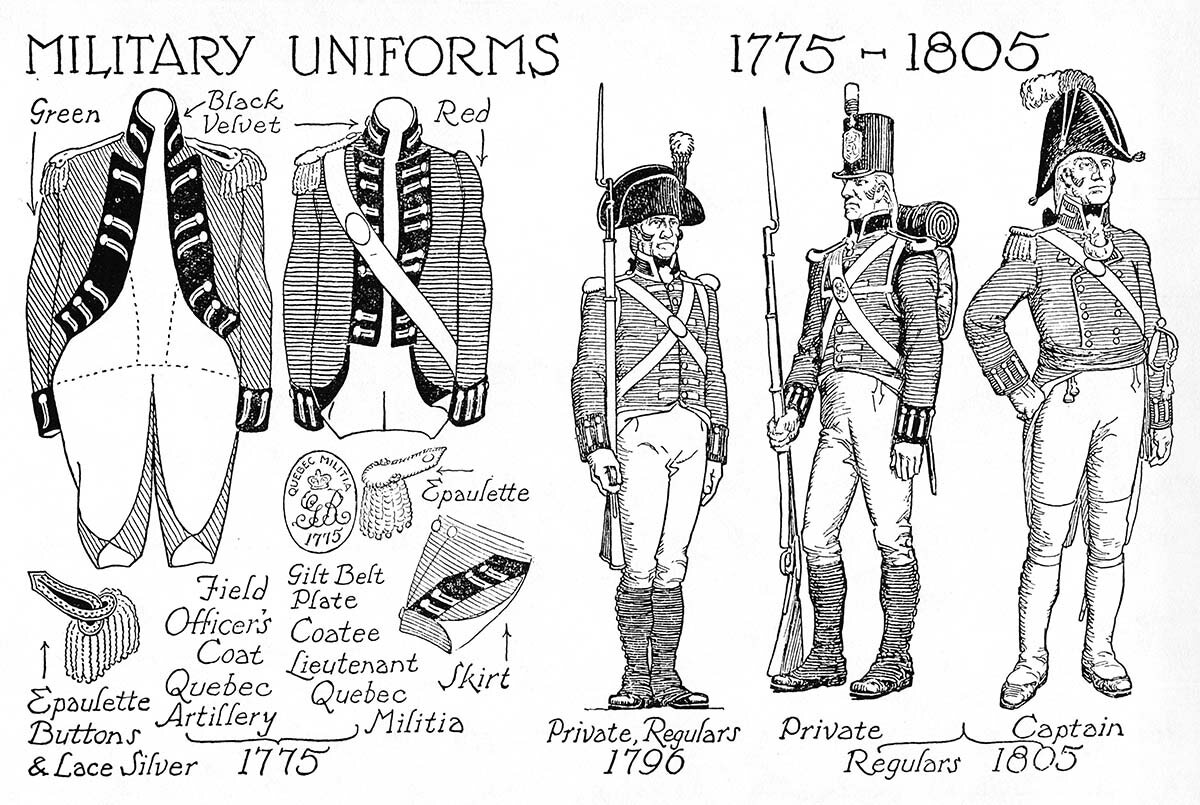Military Uniforms, 1775-1805
Library and Archives Canada, Acc. No. 1972-26-300
Remarks
C.W. Jefferys' notes about this picture from The Picture Gallery of Canadian History Volume 2
Epaulettes were introduced into the British army by Royal Warrant of 19th Dec., 1768. This prescribed that cavalry officers should have an "embroidered or laced Epaulette of Gold or Silver, with Fringe, on the Left Shoulder," with the exception of Light Dragoons, who were to have one on each shoulder; while infantry officers should wear a similar epaulette "on the Right Shoulder," with the exception of officers of the Grenadier Company of each Regiment, who were to have one on each shoulder.
From information kindly supplied by the late Col. Jabez Elliott, M.D.
These regulations seem to have applied to officers up to the rank of Captain, while superior or "field" officers generally wore two epaulettes.
The crescent of bronze or silver worn at the throat of officers was the gorget, a reduced survival of the piece of earlier armor which protected the neck. They were also given to Indian war chiefs: Romney's portrait of Brant shows him wearing one. This custom was followed for some time after the gorget was abolished in the British army. Doubtless its use persisted among the Indians with whom it was popular both as an ornament and as an insignia of the wearer's rank.
Published References
- Jefferys, Charles W. (1945) The Picture Gallery of Canadian History Volume 2, p.13
Related




Comments